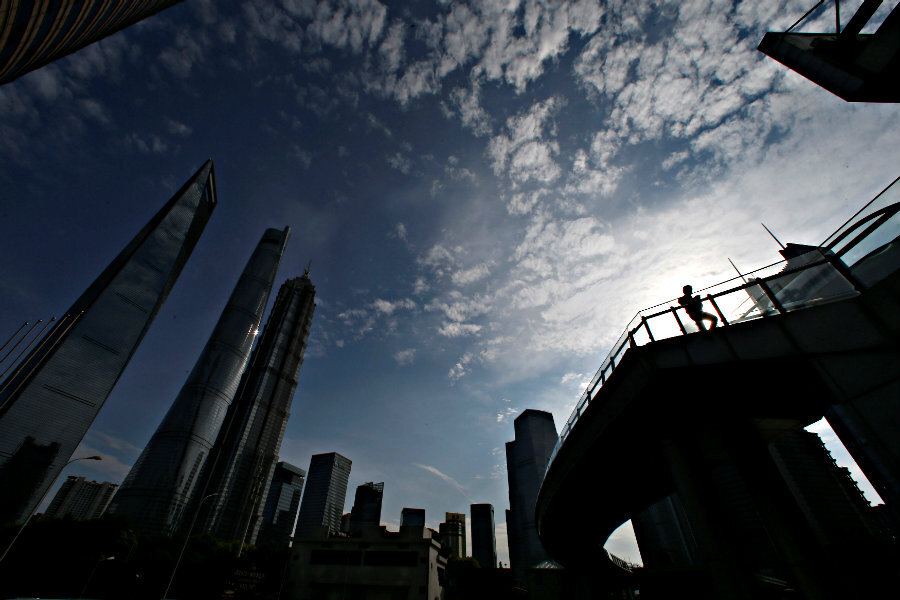Why Beijing (and 45 other cities in China) are sinking
Loading...
China’s cities are sinking, according to a new scientific study published this month in the journal Remote Sensing.
According to the Chinese government, 46 cities across China are sinking into the ground. In the last decade alone, Beijing has sunk 14 inches. The city continues to sink at a rate of nearly 11 centimeters per year.
The study, conducted by an international team of seven scientists and engineers is based on InSAR radar technology, which monitors land elevation changes.
This sinking phenomenon, called subsidence, has a number of causes. The rapid construction of massive buildings, roads, and other infrastructure projects has put a lot a weight on the ground.
Excessive pumping of groundwater is also a major problem that plagues thirsty urban areas as they struggle to keep up with rising populations and water demand. Both Shanghai and Beijing have struggled with overtaxed aquifers.
And the sinking soil has an impact on other critical aspects of city infrastructure.
“We are currently carrying out a detailed analysis of the impacts of subsidence on critical infrastructure (e.g. high-speed railways) in the Beijing plain,” wrote the study’s authors in an email to the Guardian. “Hopefully a paper summarising our findings will come out later this year.”
Beijing is particularly concerned about the impact the subsidence could have on the city’s trains, which transport a large number of the city’s 20 million residents each day.
There could be hope for Chinese cities, however. Much of the problem is rooted in poor enforcement of groundwater pumping regulations, which offers an obvious area for improvement.
And there are other cities which are exploring potential solutions, including Mexico City, which is sinking even faster than Beijing, at a rate of 28 centimeters per year.
Built on drained lakebeds, Mexico City loses up to 40 percent of its water per year as the water travels through a network of old pipes to water users throughout the city.
And many of Mexico City’s poorer residents might not even have access to piped water, relying instead on limited daily scheduled deliveries of potable water.
In order to counter its water problems, Mexico City officials are exploring water reuse options, including the treatment and recovery of wastewater, according to a February article published by the Christian Science Monitor.
The city is also looking to a new source for its drinking water – the sky. With so much piped water lost to the ground beneath the city, Mexico City is now exploring rainwater collection and purification to lighten the load on overtaxed aquifers.
Beijing is also exploring waterworks projects to counter one of the main problems behind the city’s subsidence. In 2015, China began to build a network of tunnels and canals to ease up the strain on underground aquifers.
While experts say that they are not yet sure how much of a difference the new canal and tunnel system will make, Beijing is taking steps towards a more regulated system.
Shanghai, too, has switched to river water for daily water use, slowing its own descent. City efforts have slowed Shanghai’s subsidence from up to four inches per year in the 1950s and 60s to 2/5 of an inch per year today.
The problem is not limited to Mexico and China – dozens of cities worldwide face subsidence each year. And there's a growing recognition among coastal cities that rising sea levels are adding fresh urgency to addressing this issue. But the efforts in Mexico City, Shanghai, and Beijing's indicate that cities can make necessary changes to slow or stop the trend.








